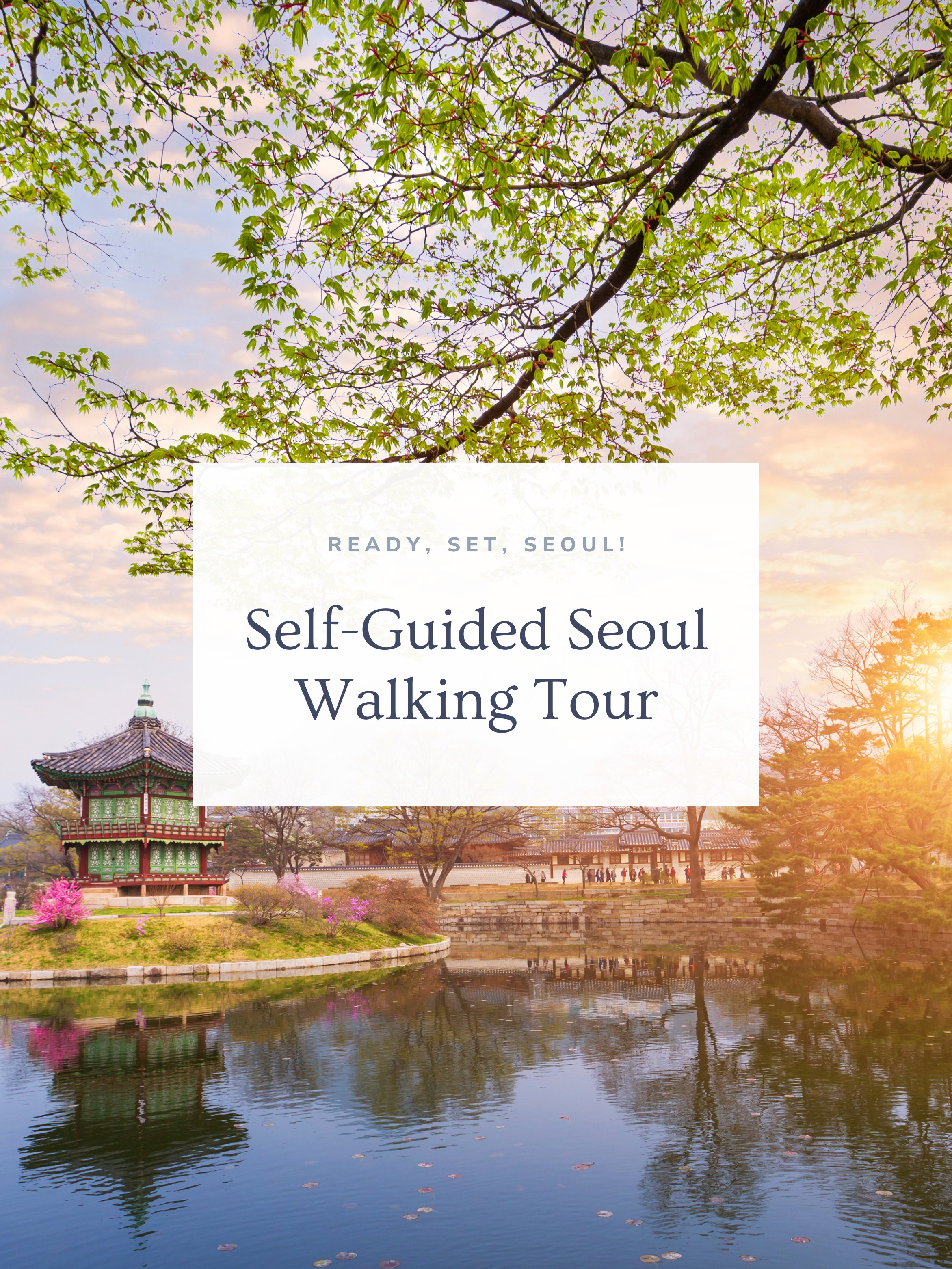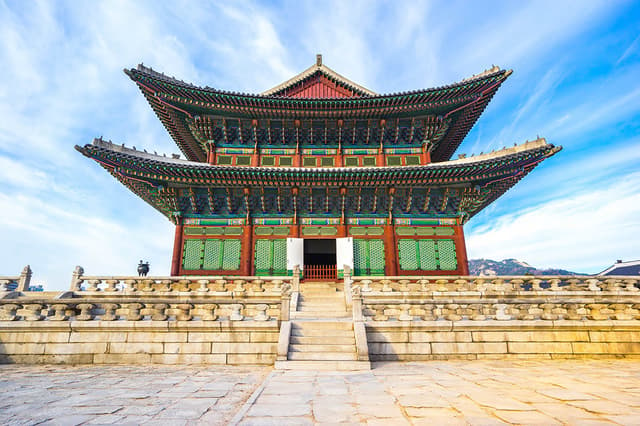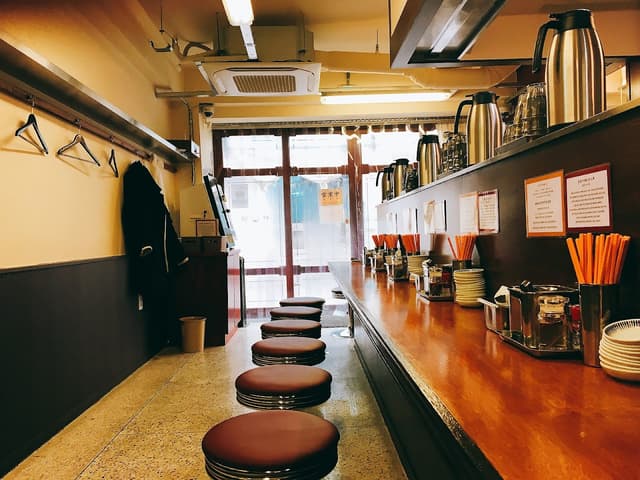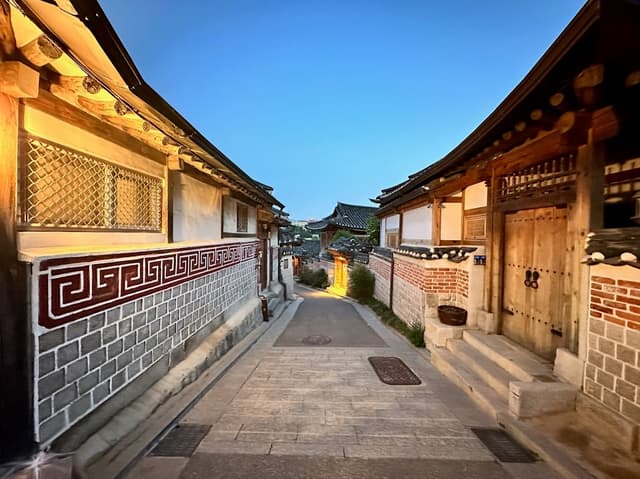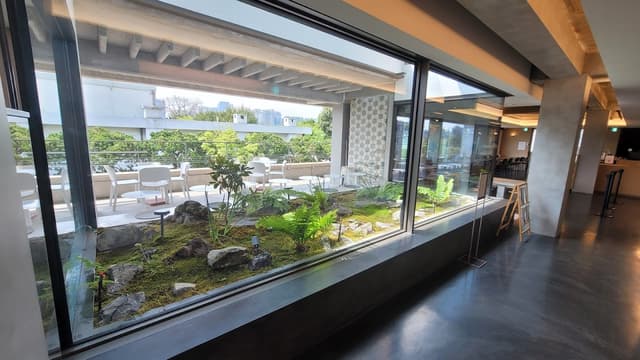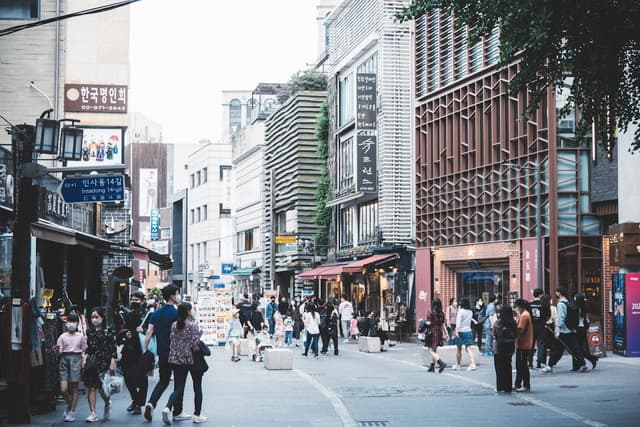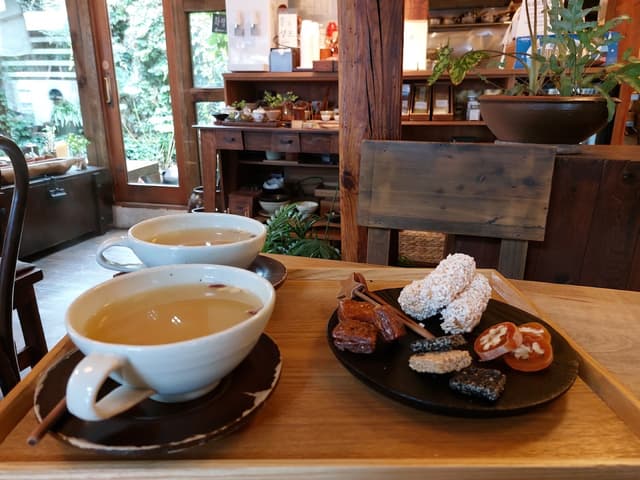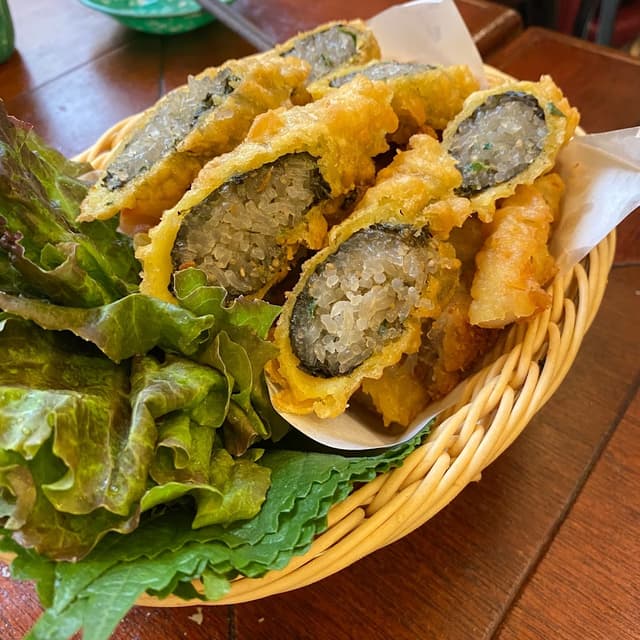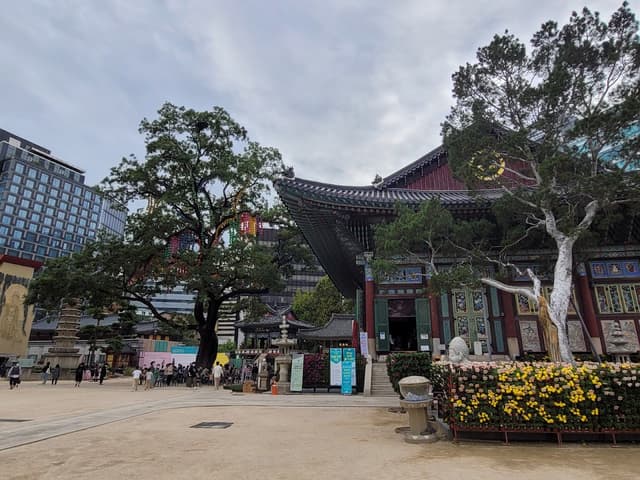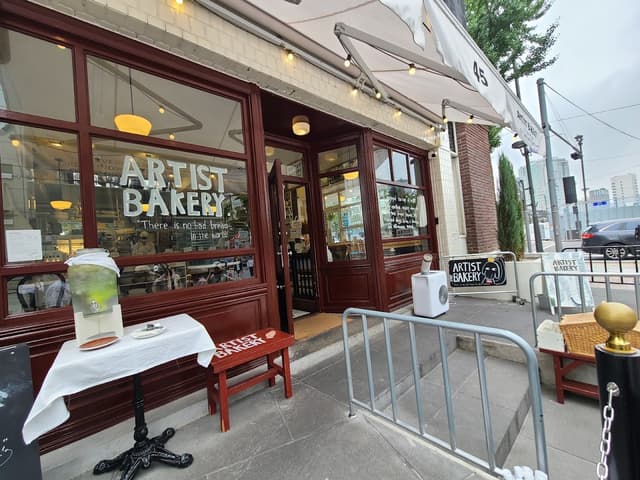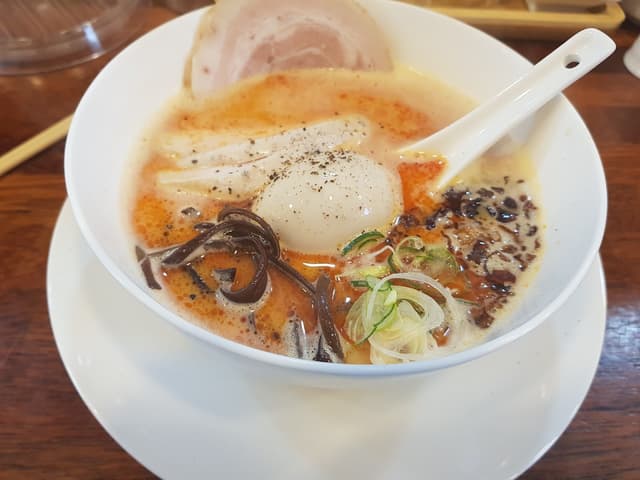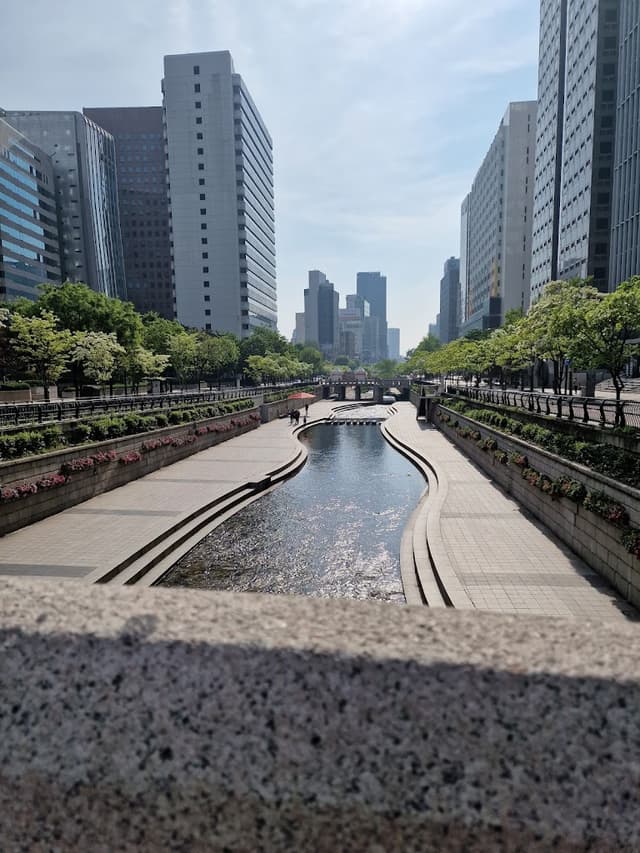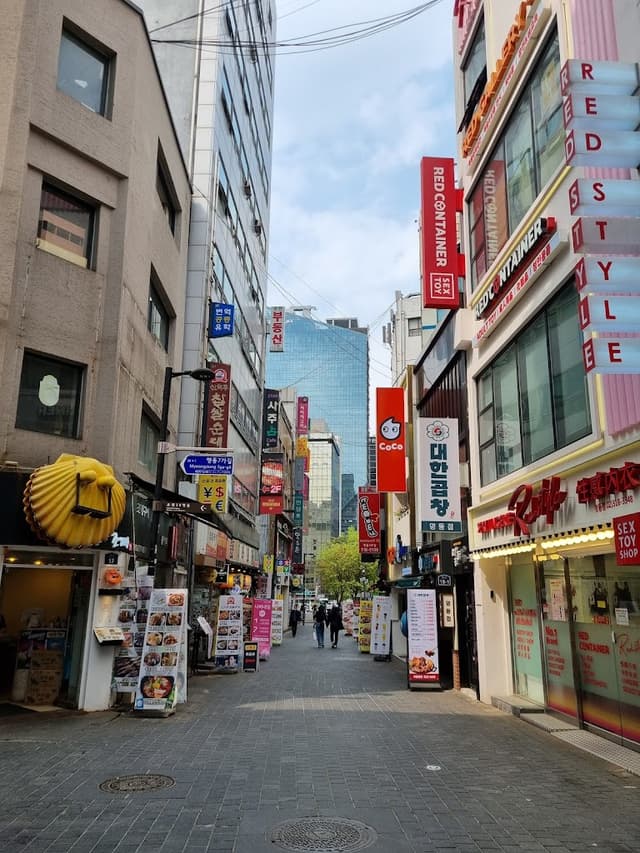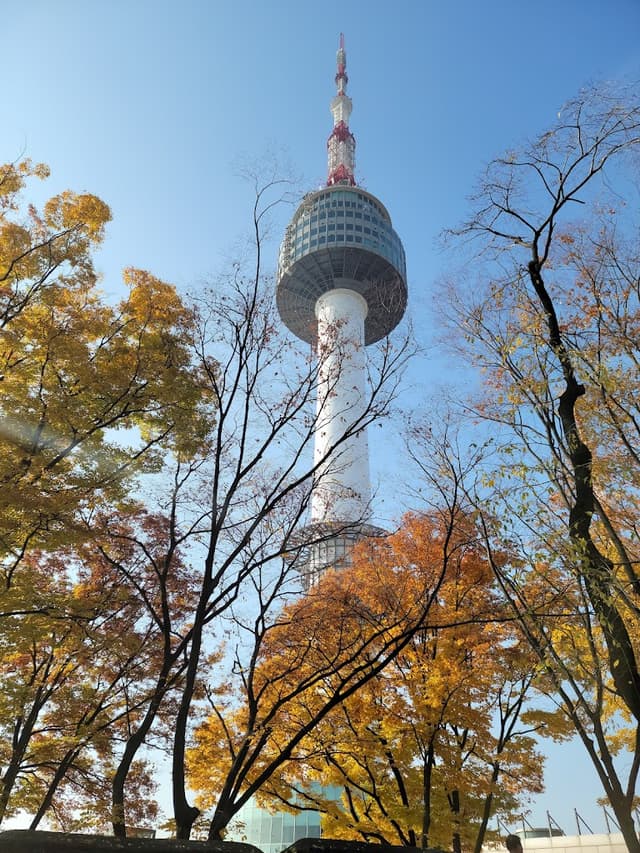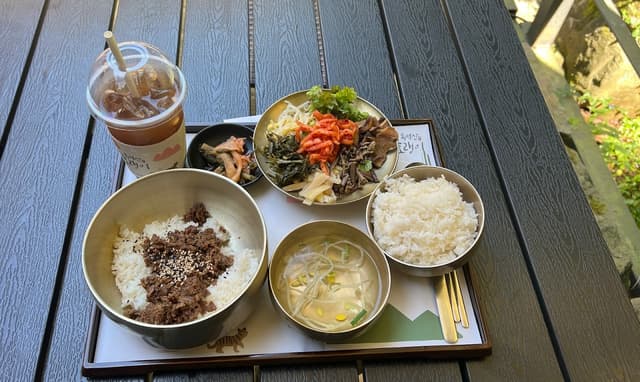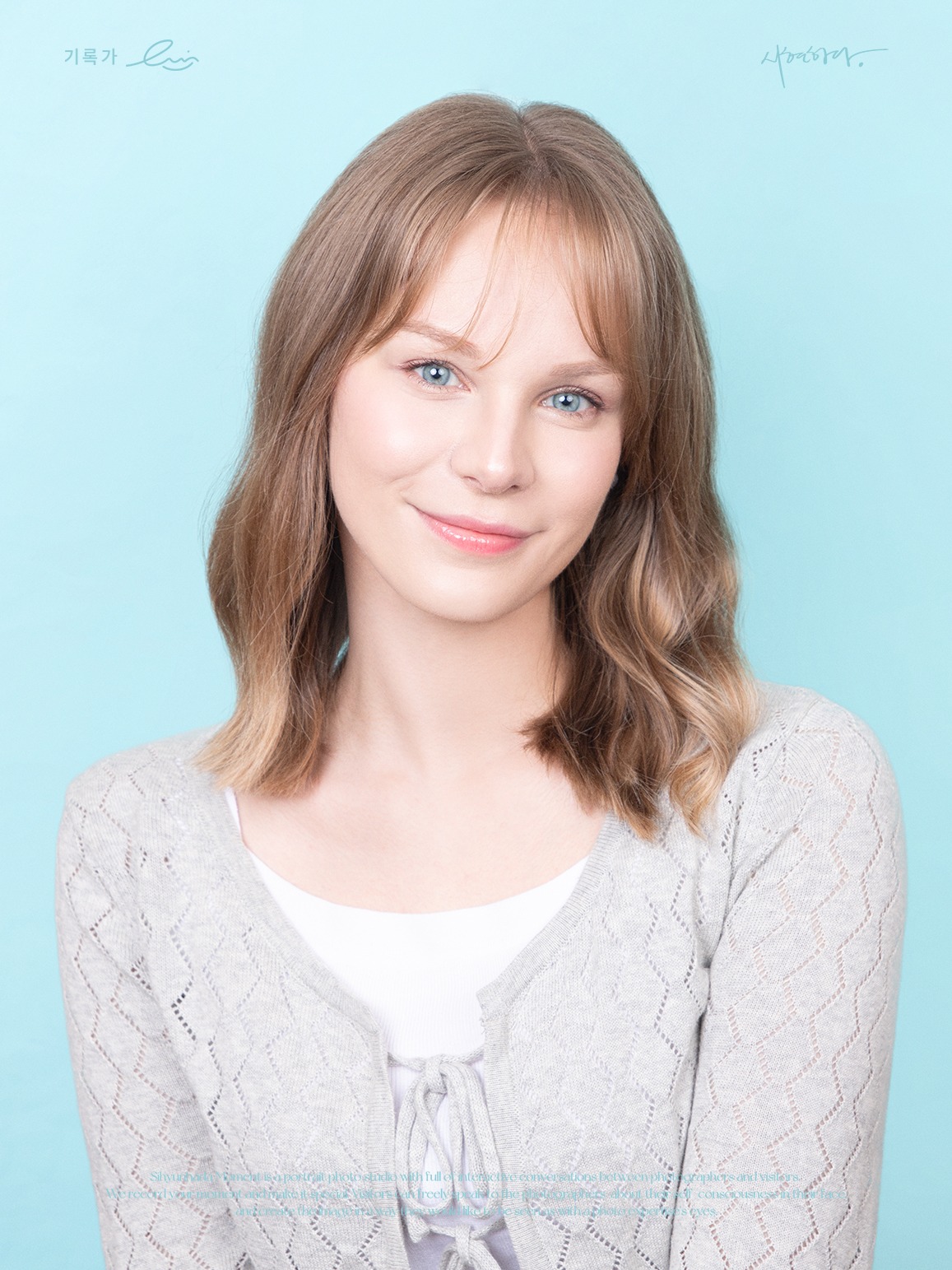Stop 1: Gyeongbokgung Palace
Begin your tour at Gyeongbokgung Palace, one of the most iconic landmarks in Seoul. Spend about 1-2 hours exploring the palace grounds, and the changing of the guard ceremony.
Gyeongbokgung Palace
@readysetseoul
Historic palaces are a must-visit in Seoul! Gyeongbokgung is the biggest and probably most famous one. It provides glimpses into Korea’s Joseon dynasty with towering granite walls and stunning architecture.
Pro tip: The entry to the palace is waved for everyone wearing a Hanbok! (You can rent a Hanbok in shops around the palace)

Details
🥢 Where To Eat & Drink
Kandasoba, Gyeongbokgung
@readysetseoul
This Japanese restaurant near Gyeongbokgung is known for its Soba dishes.

Details
Stop 2: Bukchon Hanok Village
Exit Gyeongbokgung Palace from the main gate and walk east toward Bukchon Hanok Village. This area is famous for its well-preserved traditional Korean houses (Hanok). Stroll through the narrow alleys and enjoy the unique architecture and beautiful views. This should take about 1-1.5 hours.
Bukchon Hanok Village
@readysetseoul
Bukchon Hanok Village is the perfect place to view traditional Korean architecture in the center of Seoul. The village is located in the Jongno district and has lots of cute cafes, restaurants, and souvenir shops.

Details
🥢 Where To Eat & Drink
Osulloc Tea House Bukchon
@readysetseoul
This relatively new cafe is owned by the Korean tea brand Osulloc. Visit this place for tea-based desserts and drinks and traditional Korean vibes.

Details
Stop 3: Insadong
Head south from Bukchon Hanok Village to Insadong. This vibrant neighborhood is known for its art galleries, antique shops, and traditional tea houses. It's a great place to shop for souvenirs and try traditional Korean snacks and beverages. Plan to spend about 1-2 hours here.
Insadong Street
@readysetseoul
Insadong is a district located in the heart of Seoul. This neighborhood is known for its traditional Korean culture, art galleries, antique shops, and wide range of restaurants and tea houses.
During the Joseon Dynasty, Insadong was a residential area for government officials. Over time, it evolved into a place where artists and writers gathered, leading to the founding of numerous antique shops, traditional tea houses, and art galleries.
The area has managed to preserve its traditional charm despite Seoul's modernization, making it a unique neighborhood to experience Korean culture.

Details
🥢 Where To Eat & Drink
Tteuran
@readysetseoul
This is one of my favorite traditional tea houses in Seoul! They also have an English menu explaining all the health benefits of traditional Korean teas.

Details
Namdobunsik Ikseon
@readysetseoul
Located in the trendy area of Ikseondong, this restaurant serves Tteokbokki and other "Bunsik" (Korean snack food).

Details
Stop 4: Jogyesa Temple
From Insadong, walk a short distance south to Jogyesa Temple, the chief temple of the Jogye Order of Korean Buddhism. Take some time to explore the temple grounds and enjoy the serene atmosphere. A visit here can take around 30-45 minutes.
Jogyesa Temple
@readysetseoul
Jogyesa stands as the main temple of Korean Buddhism’s Jogye order in downtown Seoul. It’s celebrated for its beautiful architecture, including the Daeungjeon Hall and ancient trees.

Details
🥢 Where To Eat & Drink
Artist Bakery
@readysetseoul
This famous bakery is located by Anguk station and is known for its variations of Korean "salt bread".

Details
Oreno Ramen Insa
@readysetseoul
Oreno Ramen is my favorite place to get Japanese Ramen in Seoul. I love the light but deep taste of their chicken stock.

Details
Stop 5: Cheonggyecheon Stream
Continue your walk to Cheonggyecheon Stream, a modern public recreation space in downtown Seoul. Enjoy a leisurely walk along the stream, which is also beautifully lit up at night. Spend about 30 minutes to an hour here.
Cheonggyecheon Stream
@readysetseoul
In the hotter months, you will see locals gathered around the stream dipping their feet in the water to cool down from the hot weather. During the winter, Cheonggyecheon Stream is part of the annual Seoul Lantern Festival, where the area is illuminated with colorful lanterns.

Details
🥢 Where To Eat & Drink
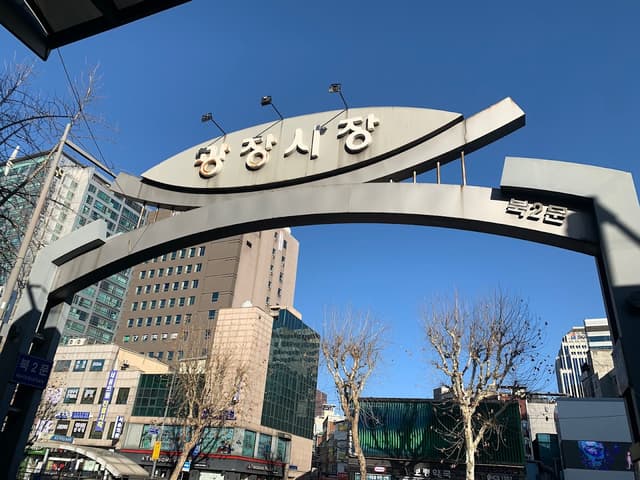
Gwangjang Market
@readysetseoul
Gwangjang Market is probably the most well-known traditional market in Seoul. The market is located in central Seoul and was established in 1905.
The market is known for its wide array of foods.
Some of the most popular dishes include:
Bindaetteok: Mung bean pancakes that are a staple at the market
Mayak Kimbap: Small, addictive rice rolls that are a hit among visitors
Yukhoe: Seasoned raw beef akin to Korean-style steak tartare
Soondae: Korean blood sausage made with noodles and pork blood
Tteokbokki: Spicy stir-fried rice cakes, a beloved Korean snack
In recent years, Gwangjang Market rose to fame through a Netflix documentary that showcases the life of one of the vendors. This made the already popular market even more famous and consequently more touristy. I still think the market is worth a visit, especially if you want to try Korean street food. However, do expect large crowds if you visit.
The general market operates from 8:30 AM to 6:00 PM, while the food stalls typically stay open until 11:00 PM. While the food and vintage clothing sections are open every day, other vendors may be closed on Sundays.

Details
Stop 6: Myeongdong
From Cheonggyecheon, head towards Myeongdong, one of Seoul's main shopping districts. Myeongdong is bustling with shops, restaurants, and street food vendors. This is a great place to grab dinner and do some evening shopping. Plan to spend 1-2 hours here.
Myeongdong Street
@readysetseoul
Myeongdong Shopping Street is the perfect place for you if you love skincare and fashion. At affordable prices, you’ll find everything from the latest beauty products to the cutest accessories, like hair clips and jewelry. It’s shopping heaven! Additionally, if you want Korean snacks, drinks, or other souvenirs to bring home, Myeongdong has you covered.
There are loads of stores that cater specifically to tourists and sell classic Korean items, such as ramyeon, green tea, or seaweed.
Additionally, another fun thing to do in Myeongdong is try street food! From Tteokbokki to Hotteok, there is nothing you can’t find at the Myeongdong night market. Now, it might be a tad pricier and less authentic than what you’d find in traditional markets, but hey, if you’re already in Myeongdong, you might as well have a little snack, right?

Details
🥢 Where To Eat & Drink
Myeongdong Kyoja Main Restaurant
@readysetseoul
Myeongdong Kyoja is a highly popular restaurant that specializes in dumplings (Mandu) and knife-cut noodle soup (Kalguksu). I would say this place lives up to the hype, but do expect long lines if you decide to go!

Details
Ending Point: Namsan Seoul Tower
For a grand finale, head to Namsan Seoul Tower. You can hike up Namsan Mountain, take the bus, or Namsan Cable Car to the tower. Enjoy panoramic views of Seoul from the observatory. This visit can take about 1-2 hours.
N Seoul Tower
@readysetseoul
N Seoul Tower, or Namsan Tower, is one of the city's most prominent landmarks.
While the admission fee to the top of the tower is 21,000 KRW, accessing the area around the tower, which includes several shops and restaurants, is free and offers just as spectacular panoramic views.
Additionally, there is a cable car that takes visitors to the top of Namsan Mountain, which starts near Myeondong Station exit 3.

Details
🥢 Where To Eat & Drink
Mokmyeoksan Horaengi
@readysetseoul
Here's another option to eat Bibimbap near Namsan! Mokmyeoksan Horaengi serves traditional cuisine inside a beautiful Hanok building in Namsan Park.

Details
Tips For Planning Your Walking Tour
1. Use Naver Maps: This app helps navigate Seoul and is used by most locals.
2. Weather Check: Seoul has distinct seasons. Summers can be hot and humid, while winters can be very cold. Check the weather forecast and dress accordingly.
3. Stay Hydrated: Carry a water bottle, especially during hot weather. There are convenience stores everywhere where you can refill or buy drinks.
4. Public Restrooms: Public restrooms are widely available, especially in subway stations and large parks. They are generally clean and well-maintained.
6. Allow Extra Time: Plan for extra time to explore, take photos, and enjoy the scenery without feeling rushed.
Basic Korean Phrases for Travelers
Essentials
Hello: 안녕하세요 (Annyeonghaseyo)
Thank you: 감사합니다 (Gamsahabnida)
Yes: 네 (Ne)
No: 아니요 (Aniyo)
Sorry: 죄송합니다 (Joesonghabnida)
Navigation Help
Where is…?: 어디예요? (… Eodi-yeyo?)
How much is this?: 이거 얼마예요? (Igeo eolmayeyo?)
I want to go to…: …에 가고 싶어요 (…e gago sipeoyo)
Is this the right way to…?: 이게 … 가는 길 맞아요? (Ige … ganeun gil majayo?)
Dining Out
I’m allergic to…: 저는 … 알레르기가 있어요. (Jeoneun … allerugi ga isseoyo)
Water, please: 물 주세요. (Mul juseyo)
I want to pay: 계산 할게요. (Gyesans halgaeyo)
Traveling to Seoul soon?
Do you want to make your trip to Korea unforgettable? Let me do the heavy lifting!
Order your personalized itinerary by clicking the link below. 👇
Thanks for your support!
Wishing you safe travels and an amazing time in Korea!
- Lara ✨
* * *
